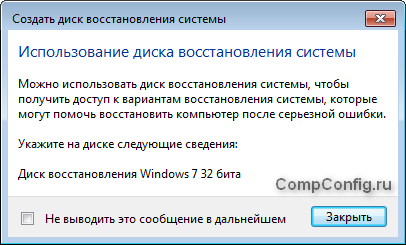Unexpected failures occur in any operating system. Disk Windows recovery 7 can be created independently by writing necessary files to a suitable storage medium. For this procedure, the user will need about 10 minutes of time.
Restoring Windows 10 from Control Panel
Latest version operating system has many shortcomings and sometimes after an update it may not start for some users. A solution to this problem has been provided by Microsoft and a Windows 10 recovery disk can be created from the Control Panel.
If the creation of a Windows 10 recovery disk does not take place on your own computer, then you must definitely find out the bitness of the broken and temporarily used Windows, they must be the same.
Instructions on the question: how create a Windows 10 recovery disk:
After the program finishes, the flash drive can be used to restore Windows 10 and install it. Sometimes creating media using this method fails, in these cases you need to create a rescue disk using other methods.
Some users may need to create a Windows 8 recovery disc. This can be done in the same way as described above.
Reinstalling Windows 10 with the official application
The Microsoft website suggests using a separate application to create a bootable USB flash drive.
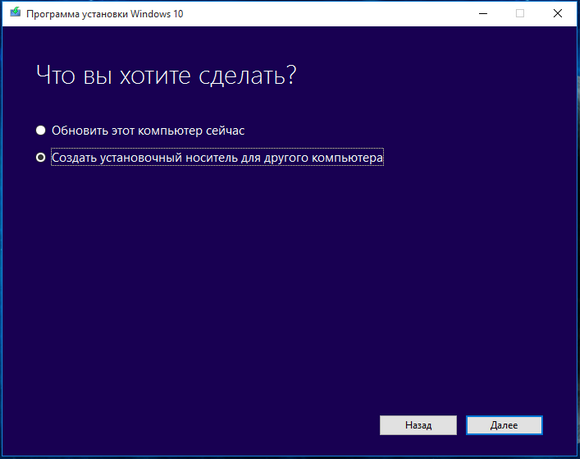
After these steps, you can use the USB flash drive to install or reset the system.
Windows installation flash drive from system image
To restore Windows 10 from a system image, you must first create this file. This can be done through the built-in application. To open it, go to " Control Panel» → « All Control Panel Elements» → «» → « Backup copy system image».
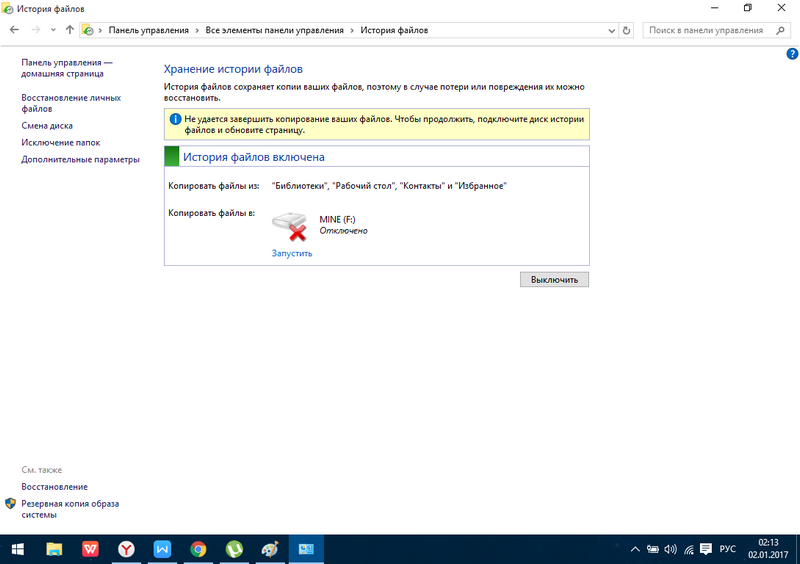
In the next window you need to select the section “ Creating a system image».
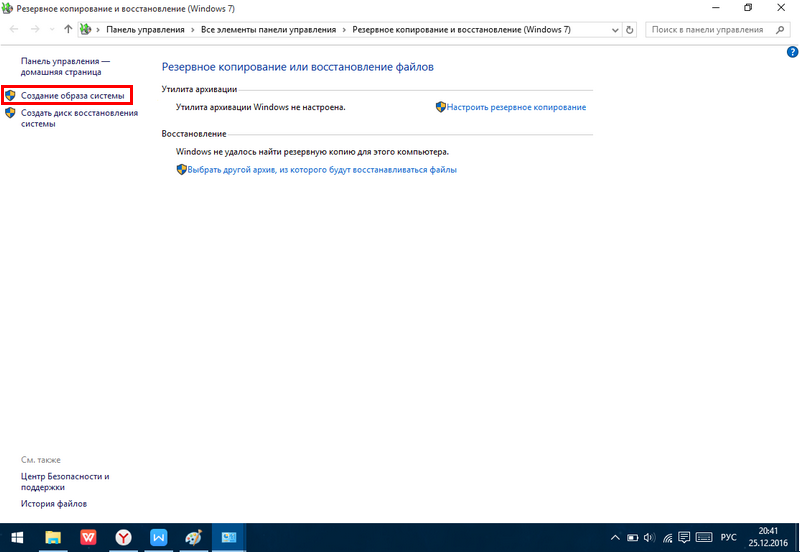
In the window that appears, you need to select the media on which the image will be saved.
It is advisable to create a separate disk partition to store this data, as it will be needed to restore Windows 10 from an image. If you don’t have a flash drive at hand, you can reset the system settings from the created file on your hard drive.
After data archiving is completed, the user will be prompted to create a system recovery disk. Thanks to this, in the event of an unexpected error in the system, you can restore all the data that was on the archived disk.
Installation flash drive for Windows via UltraISO
First, you need to download the ISO file of the desired OS version from the Internet. Also, to create a recovery disk Windows systems 7, just like other versions, the user will need the program or its analogues ( Rufus, Wintobootik etc.) capable of writing system images to a USB drive.
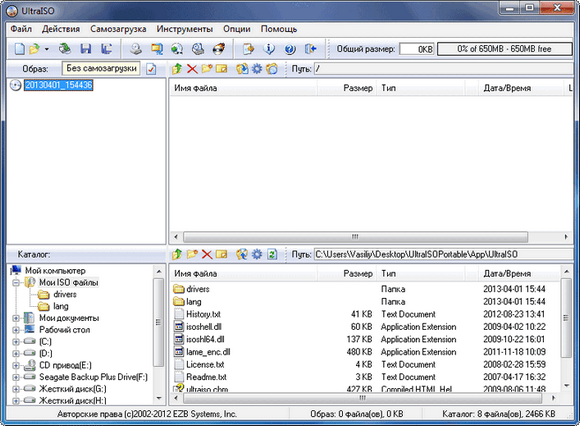
To restore Windows 7 via an ISO image, you need to do exactly the same steps, but at the stage of selecting an image file to burn, you need to use an image of the seven or other versions of the OS. The same method is suitable if you are wondering how to restore Windows XP or another version of this OS.
Creating an installation disk
If for some reason the laptop or PC does not want to accept bootable USB flash drive, for example, on very old devices or if the USB ports are malfunctioning, then in these cases you can use a DVD-R or DVD-RW disc.
Due to the fact that disk media capacity is limited, you need to find an image up to 4.7 GB (capacity for DVD-R and DVD-RW). Such files contain only the base assembly without additional data and applications. Official images of all Windows OS occupy a volume of 2–3 GB. But amateur versions have a basic set of popular programs and improvements, so they can take several times more.
How to make an installation disk
To do this you will need a floppy drive, DVD and UltraISO. The program can be replaced with another one that can write information to disk.
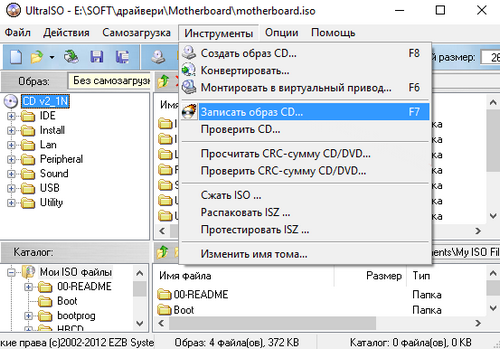
Now you need to wait for the transfer of information to the optical disk to complete.
Multiboot flash drive
Such a multifunctional device is necessary for computer technicians. It is much more convenient to restore Windows XP, Vista, 7, 8, 10 and other versions from one universal flash drive. This decision called a multiboot device. To create it you will need a program WinSetupFromUSB. It uses a minimalistic bootloader that allows boot disk use with several system images at once.
Initially, you need to download WinSetupFromUSB and ISO images of the desired systems. After starting the program, a window with settings appears in front of the user.
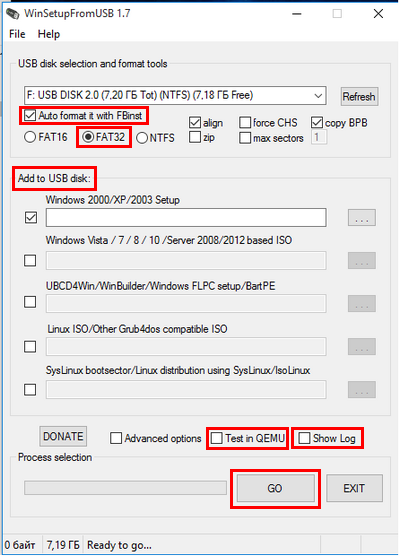
It needs:
- Select the drive to install on.
- Check the box " Auto format it with FBinst" This allows you to format the media to the desired format before starting installation.
- Select FAT32 format. It should be taken into account that this file system does not recognize images larger than 4 GB in size. When installing NTFS, some computers will not be able to see the flash drive and it will not work.
- Select the type of operating system that will be installed.
- In Explorer, assign a system image file.
- Press the button " GO» and confirm the actions in the new warning windows.
After this, the process of installing files on the specified media will begin. Installation details can be viewed by checking the "".
After completing the installation of one system image, you can immediately begin mounting the next OS. Now you can restore Windows XP and other versions of the operating system using one flash drive or a separate hard drive.
When recording a second OS distribution, you need to uncheck " Auto format it with FBinst" Otherwise, the previously recorded system will be deleted from the drive.
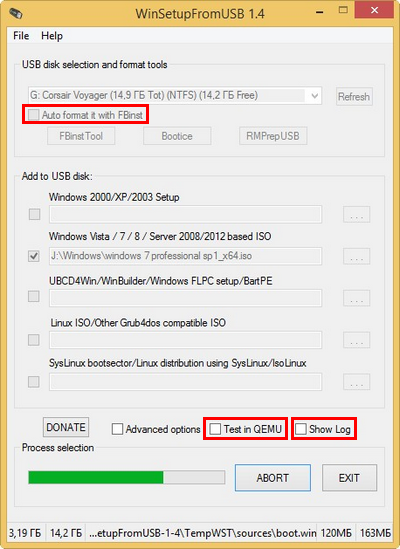
In addition to the installation version of Windows, you can also download Linux distributions and many useful programs like Acronis, antivirus and backup bootloaders. To do this, you need to first download the necessary ISO files and when installing on the drive in the WinSetupForUSB program, select the “ Linux ISO/ Other Grub4dos compatible ISO»
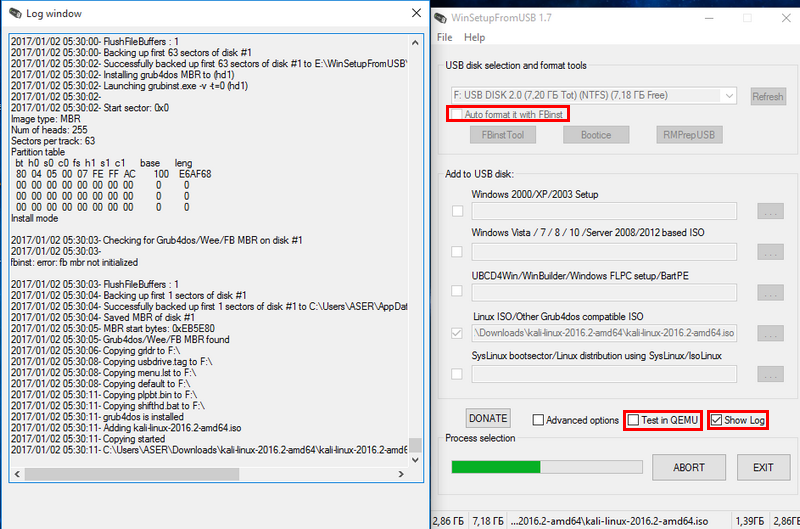
After installation is complete, immediately check the functionality of the programs on the flash drive by checking the “ Test in QEMU».
For the drive to be recognized by the computer, it must be inserted into a USB 2.0 port connected directly to the motherboard.
When starting in the BIOS, the user will see a minimalistic GRUB4DOS window, in which you need to use the keys to select the OS to be launched or the installed program.
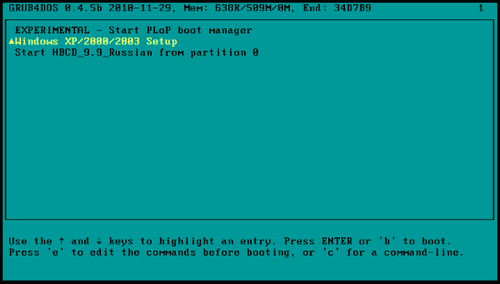
To create a multiboot flash drive, they also use the program MultiBoot. It includes Grub4Dos installer, formatter and WinSetupUSB. The only difference from the previous creation method is a more beautiful graphical menu when starting the media and already built-in programs for recovery, Acronis, etc.
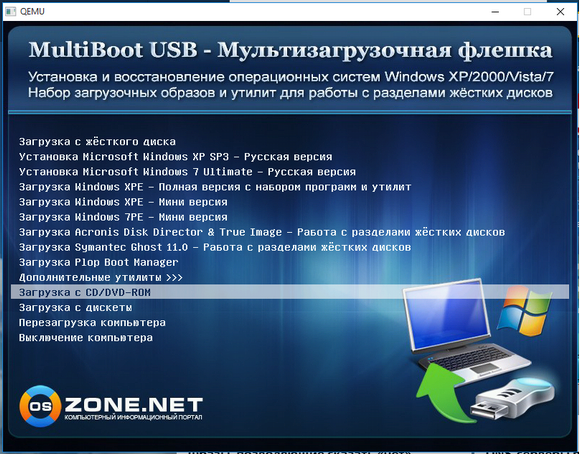
How to run an installation flash drive or disk
After creating a Windows 7 recovery disc on your laptop or PC, you need to run it. To do this, insert the storage medium into the device. After this, turn off your computer.
To restore the system, you must first configure the device's BIOS so that it can start the flash drive or disk. To do this, you need to press a certain key in the first 2 seconds after turning on the computer. U different manufacturers she is different. You can read more about this in the instructions for the device. Approximate use of keys to enter the BIOS on different branded devices:
- Acer, Lenovo, Asus, Sony - F2 or Ctrl + Alt + Esc
- HP - F10
- Samsung - Del
- Dell devices - F1 or Del
To ensure that the BIOS boots on the first try, press the desired key 3-5 times. After this, a blue menu will appear on the screen with items on English language. U personal computers The BIOS may look more attractive.
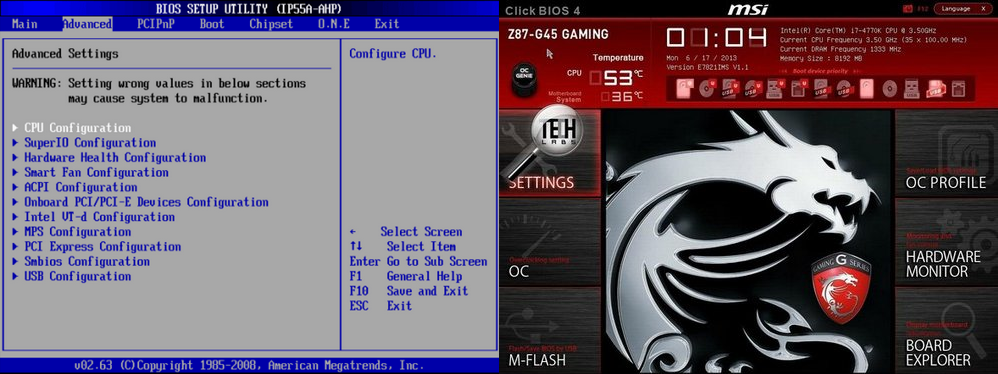
To boot from installation disk you need to go to the section " "Boot" and change the download priority there (“ Boot Device Prority"). In the same section, you need to find a previously made flash drive or disk with recovery files and move the media to the first boot position using the F5 and F6 keys.

After this you need to find the section “ UEFI Boot Support" or " "Boot Mode" and there set Enabled or UEFI Boot.
After these settings, you need to go to the “ Exit" and select the item " Exit & Save Changes».
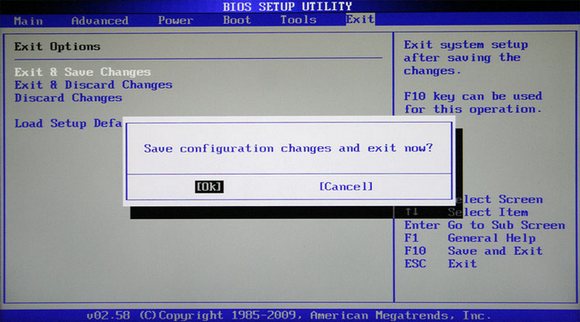
The installation software will start loading from the disk. Windows version. Depending on the OS version, the boot menu may differ in appearance.
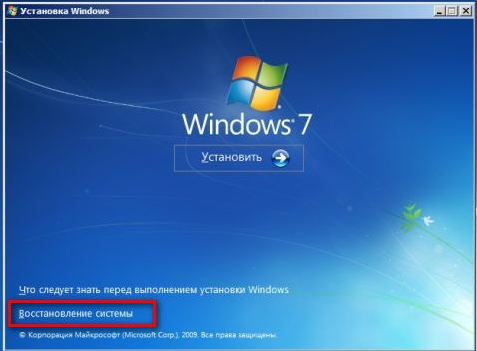
Using a recovery disk, you can perform not only a complete reinstallation, but also partial repair of damaged files via the command line, or restore damaged download files.
![]()
Select the desired recovery method from the program menu and wait until the utility finishes. The main thing is that the device does not turn off during recovery; it is better to connect it to the network. If this is not done, then during recovery a malfunction may occur and hard error disk. A similar problem will have to be solved by physically repairing the device.
Resetting the system on laptops
To restore the system on laptops, there is a built-in reset of OS settings. To restore Windows 7 without a disk, you need to run standard remedy recovery.
To do this, after starting the device, hold the power button or a specific key combination for 5-10 seconds. Next, to restore the system using the built-in program, select the desired item in the menu that appears and wait until the program finishes.
The laptop will restore Windows XP if it was originally installed on it. The same will happen with all other OS versions. If at the time of purchase it was old version operating system, it will be restored.
There are many in various ways, how to restore the system after a breakdown or infection. The simplest method is complete reinstallation OS using an installation disk, which is created in 10 minutes and can then be used on any device to repair them.
Video on the topic
Disk
system recovery
Theme for computers or laptops,
with Windows OS installed.
And after the AutoPlay window appears and formatting
disk – click on the “Create disk” button in the initial tab.
A scale will appear in the same tab.
Which will, as the recovery disk is created,
fill green. Until the disk is created
fully.
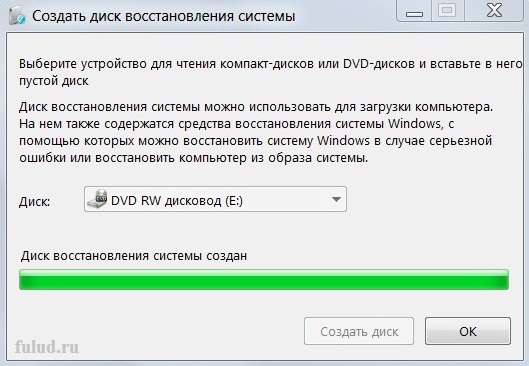
All you have to do is click “OK” in this tab.
And the tab will close.
The “Autorun” window will also show the final result.
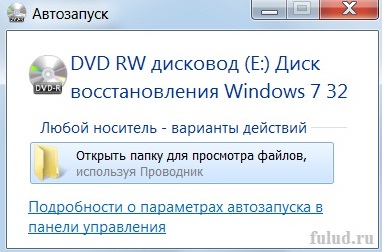
You can open the folder with the created recovery disk,
by clicking on the active button in “Autorun”

We made sure that the folder is not empty and the recovery disk was successfully created. You can close and remove the disc in a safe manner.
By creating a system recovery disk, you can be sure that
that if serious problems occur with Windows OS, the disk will help you.
Or the system will notify you of the need
use the recovery disk.
Or you can initiate a system recovery yourself.
If you have serious problems with your computer.
If, after turning on the computer, Windows does not
not loading - you can paste system recovery disk
into the drive and, since the disc contains system recovery tools, the computer will resume operation.
Of course, before using the recovery disk, you need to make sure that problems really exist. That is, if Windows does not boot at once, then turn off and turn on the computer again.
And further. You should take into account that after you restore your computer using a recovery disk, you may lose some files that are important to you. Whether it's photos, videos, music, text documents. Therefore, to avoid loss, you need to transfer such files to external media.
On a flash drive or disk.
If your system keeps getting errors or won't boot at all, you can try to fix the problem using a Windows 7 recovery disc.
It contains a set of utilities for testing and restoring the system, such as:
- Startup recovery
- System Restore
- Restoring a system image
- Diagnostics Windows memory
- Command line
And so, to create a Windows 7 recovery disk you need to follow these steps:
1. Click “Start->All Programs->Maintenance” and select “Create a system repair disk”.
As a result of these steps, the “Create a system repair disk” window should load.
This action can also be performed using the “recdisc” command by running it in the Run window (Win+R) or in .
2. Select your CD/DVD reader from the drop-down list.
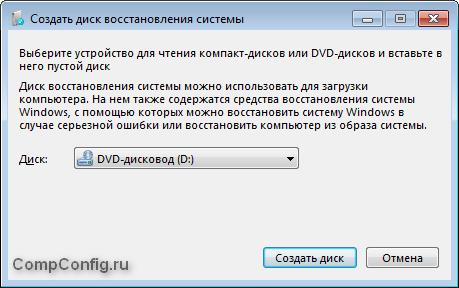
3. Insert a blank disc into the drive.
In this example, a recovery disk was created for a newly installed 32-bit Windows 7. After recording, the data volume was 147 MB. Therefore, a regular CD is also suitable for recording a disc.
4. Click the "Create Disk" button.
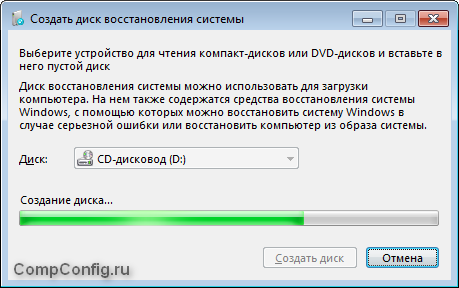
The recovery disk creation process will begin, which will take a few minutes. To record recovery tools, standard Windows tools.
5. After recording is complete, a window will appear asking you to specify system information on the media. Click the "Close" button.
